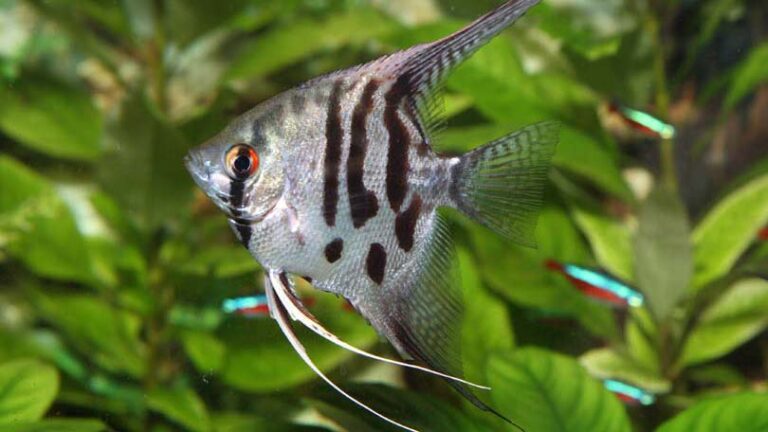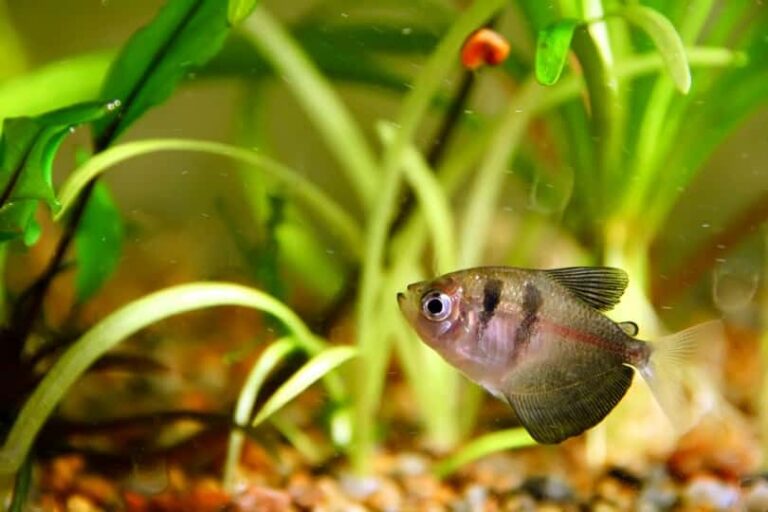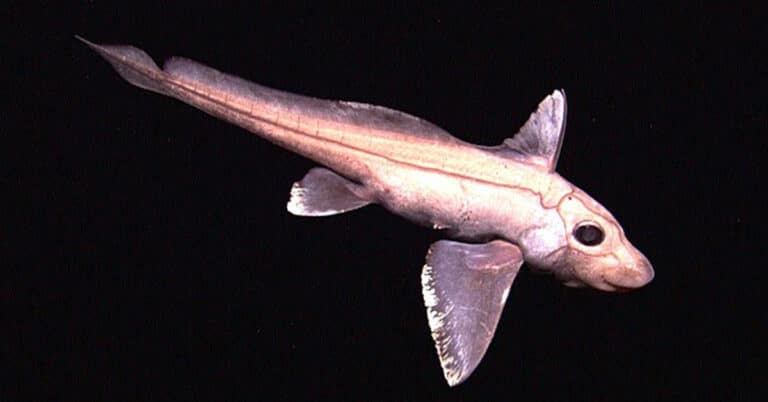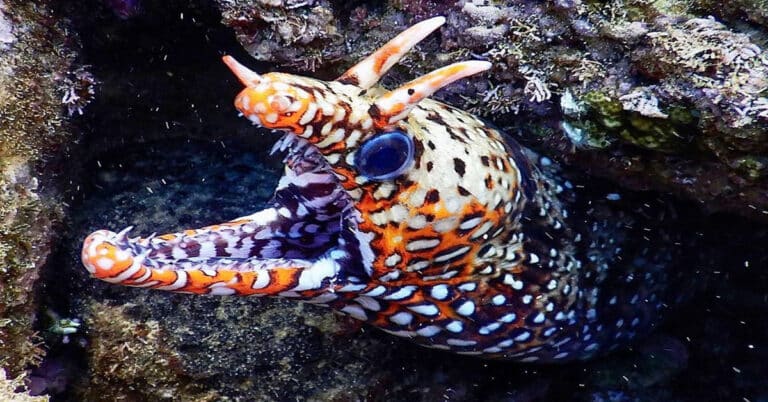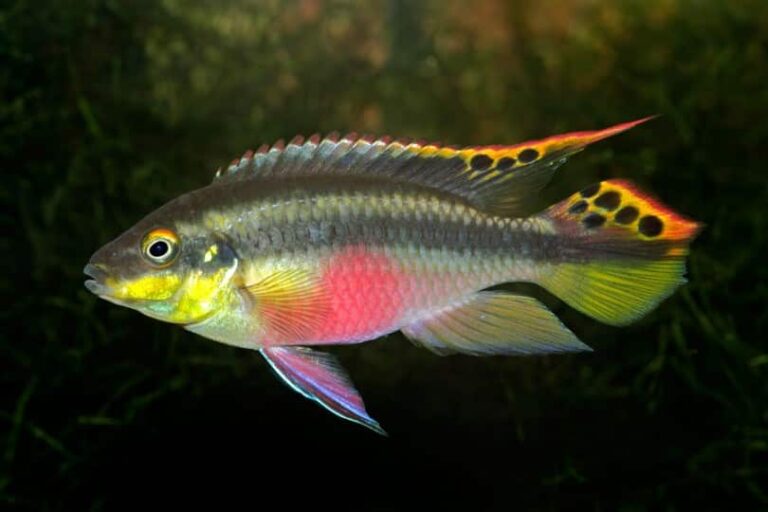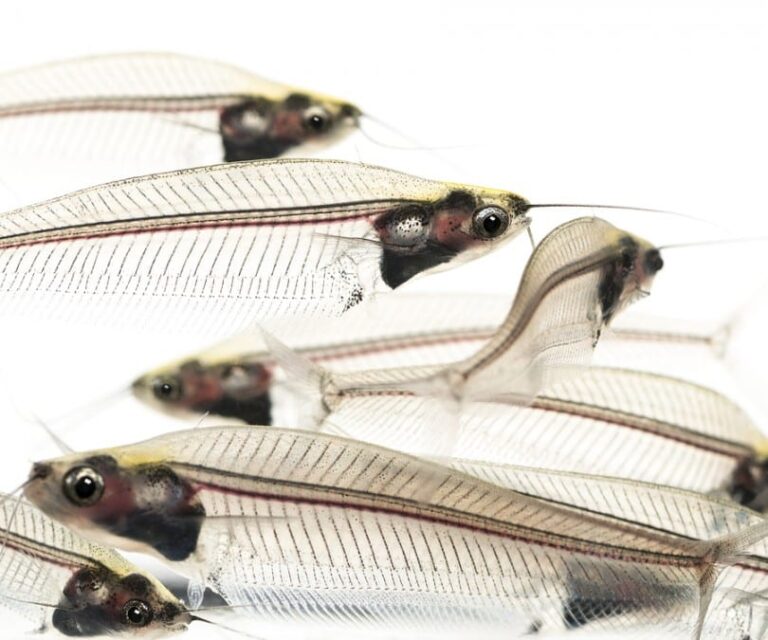Arowana Fish – Everything about Aquatic World’s Lucky Charm
Looking for a special addition to your aquarium that could bring you good luck? Consider the captivating arowana fish since these extraordinary creatures are cherished symbols of fortune in various cultures, especially within the realm of Feng Shui.
Arowanas are renowned for representing power, strength, and prosperity. Many believe that having an Arowana fish in their homes can enhance health and invite prosperity. With their enchanting scales and graceful movements, they are not just beautiful to look at but are also believed to radiate positive energy.
So, if you’re seeking a unique symbol of good fortune and elegance, think about introducing an Arowana fish into your aquarium. It may become your very own lucky charm, bringing positivity into your life.
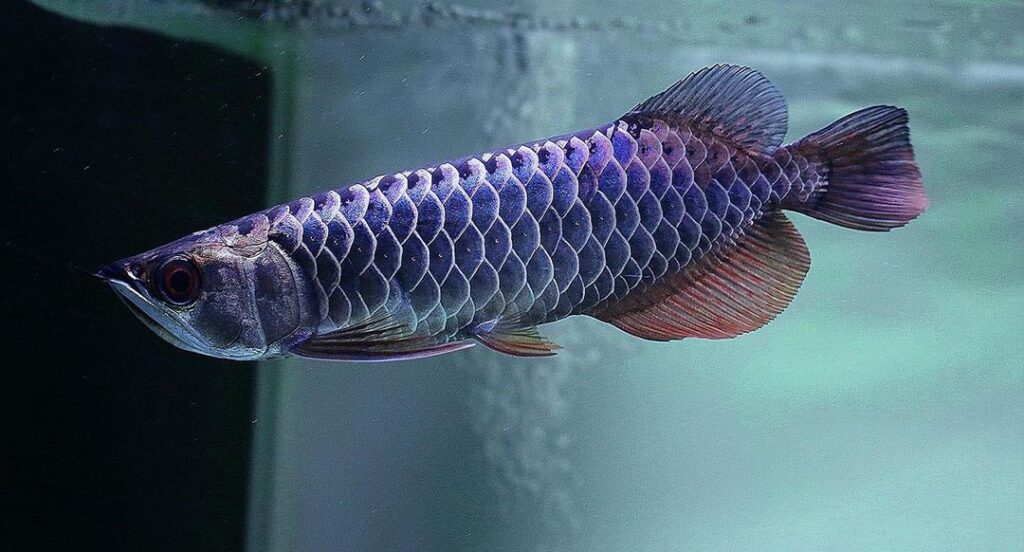
Scientific Classification
| Kingdom: | Animalia |
| Phylum: | Chordata |
| Class: | Actinopterygii |
| Order: | Osteoglossiformes |
| Suborder: | Osteoglossoidei |
| Family: | Osteoglossidae |
The Arowana hailing from the Osteoglossidae family are a bony freshwater fish, they have another name, Bonytongues (the name bony tongue is meant for the Arapaimidae). The head of this group of fish is bony and its lengthened body is covered with weighty scales, having canals of mosaic design. The fins on the anal and dorsal sides have a long base and soft rays, whereas the fins on the ventral and pectoral sides are tiny.
It obtained its name as “bony tongued” from the toothed bone situated at the base of the mouth. The “tongue”, is fitted with teeth, which bite on the other teeth in the mouth. The Arowana is an optional air breather, it gets oxygen from the atmosphere by inhaling it to its swim bladder which has capillaries lined similar to the tissues of the lung.
Why is Arowana Fish So Unique?
Arowana fish are among the priciest aquarium fish in the world. Additionally, it has a temperament similar to that of a dinosaur and is among the world’s fiercest fish. Its body is adorned with shiny metallic scales that resemble red coins. On the chin of this extraordinary fish, you can also observe long, thin whiskers.
The way an Arowana fish glides in the water resembles the Chinese paper dragon that is frequently seen during Chinese New Year celebrations. Asians have a strong belief that keeping arowana fish will bring good fortune and wealth to the owner. Arowana fish, according to mystic belief, can even save its owner from dying by dying.
5 Most Popular Types of Arowana Fish
1. Silver Arowana
With an average height of three and a half feet, the silver arowana is the biggest of all Arowana species. Even though it is the largest Arowana, it is also regarded as one of the friendliest. Its distinctive metallic silver hue and large dorsal and anal fins are unique to South American Arowana. Furthermore, it’s the most widely available and affordable arowana you can find.
2. Black Arowana
In terms of size and shape, black Arowanas resemble silver Arowanas quite closely. Black Arowana juveniles feature a definite black stripe along the length of their bodies. However, as they get older, this band gradually fades away, leaving their body with a faint purple tinge that is most obvious around their anal fin. They have a delicate physique and grow much more slowly than the silver Arowana.
3. Green Arowana
In Malaysia, you will have the opportunity to see the green arowana in its natural habitat. It is a light gray color with a little green tint, especially around the edges of its fins. This Arowana fish, which reaches a maximum length of about 3 feet, has dorsal and anal fins that are shorter than those of its South American counterparts.
4. Golden Arowana
The Golden Arowana is a captivating fish, renowned for its radiant appearance. Its body is adorned with golden scales, giving it a majestic look. This fish can grow up to three feet in length, requiring ample space in aquariums. In behavior, Golden Arowanas tend to be solitary and may display a bit of shyness. They are also known for their jumping ability which is why you’ll need secure tank lids to protect them.
5. Platinum Arowana
The cost of a platinum arowana can vary widely based on factors such as size and rarity, with prices ranging from hundreds to thousands of dollars. What sets this fish apart is its remarkable silver-white hue, a rarity within the Arowana species. This exceptional appearance and scarcity make platinum Arowanas highly coveted by aquarium enthusiasts and collectors, contributing to their premium price in the market.
How to Take Care of Arowana Fish
In their natural habitat of Southeast Asia, Arowana fish can thrive for over two decades. However, when cared for properly in captivity, these magnificent creatures can extend their lifespan even further. Originating from regions with slow-moving waters, such as wetlands, forested swamps, and blackwater rivers, Arowanas have a strong preference for warm water. To recreate their ideal conditions in an aquarium, it’s crucial to maintain a water temperature between 75 and 85 degrees Fahrenheit (24-29 degrees Celsius).
Due to their substantial growth, it’s important to provide ample space for your Arowana fish in their tank. While a 60-gallon tank may initially suffice for young Arowanas, they will soon outgrow it. To accommodate their size when they reach full maturity, consider investing in a spacious 250-gallon tank.
Arowana fish tend to be reclusive and appreciate hiding places and shelter in their tank. You can create hiding spots with plants or rocks. Some aquarists opt for dark backgrounds in their tanks to provide Arowanas with a sense of security. Additionally, maintaining effective filtration in the tank is essential, as these fish produce a substantial amount of waste. To keep the water quality optimal, regular water changes and frequent filter cleaning are a must.
To ensure the well-being of your Arowana fish, it’s essential to maintain specific water parameters. Aim for a pH range between 6.5 and 7.5 and a water hardness of 10-20DH.
If you manage to follow these guidelines, you can easily create a thriving environment for these magnificent fish in your aquarium.
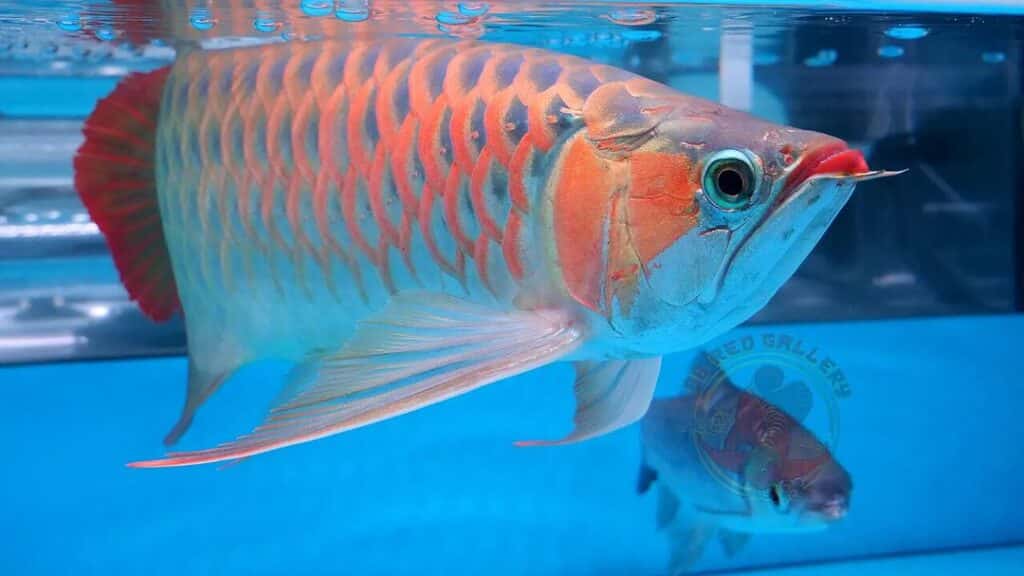
Aquatic Plants & Decoration
Selecting aquatic plants for Arowanas might be challenging. Given their size, they can uproot or destroy a wide variety of plants. Choose plants like Anubias that can be fastened to rocks or driftwood.
Arowanas prefer to eat from the surface and will jump out of the tank to seek food, so floating plants might not be the best option for them.
Lava rocks are a fantastic choice for stones since they can contain microorganisms and aid with aquarium filtration. Additionally, the aquarium can be embellished with sizable pieces of driftwood. However, Arowana enthusiasts frequently choose to house these fish in a huge, empty tank with a dark background.
What to Feed Arowana Fish
Arowanas are known to be carnivorous creatures, requiring a diet primarily composed of live or frozen sustenance such as insects, shrimp, and crickets. In their natural habitat, these magnificent fish prey on small fish and insects, both in the water and on land.
During their juvenile stages, Arowanas experience rapid growth, which demands a substantial amount of energy and nourishment. To keep up with this growth rate, it is advisable to feed young Arowanas twice a day with top-notch food. As they mature and their growth rate slows down, along with a decrease in metabolism, their appetite naturally diminishes, and they will accept smaller portions of food. Subsequently, it is sufficient to feed sub-adult to adult Arowanas once a day as long as they continue to show an interest in food.
Furthermore, it is worth noting that keeping the shell or exoskeleton intact on shrimp and prawns has been known to enhance the red pigmentation in Arowana fish.
As juveniles, Arowana fish are readily receptive to small live fish and various tiny insects like worms, roaches, and crickets. As they grow, a gradual transition can be made to non-live frozen options such as market shrimp, prawns, shellfish, and other types of fish suitable for consumption. Although it can be challenging, some Arowanas may eventually accept processed foods like pellets. However, it is crucial to ensure that the processed food contains an adequate amount of protein to meet their dietary needs.
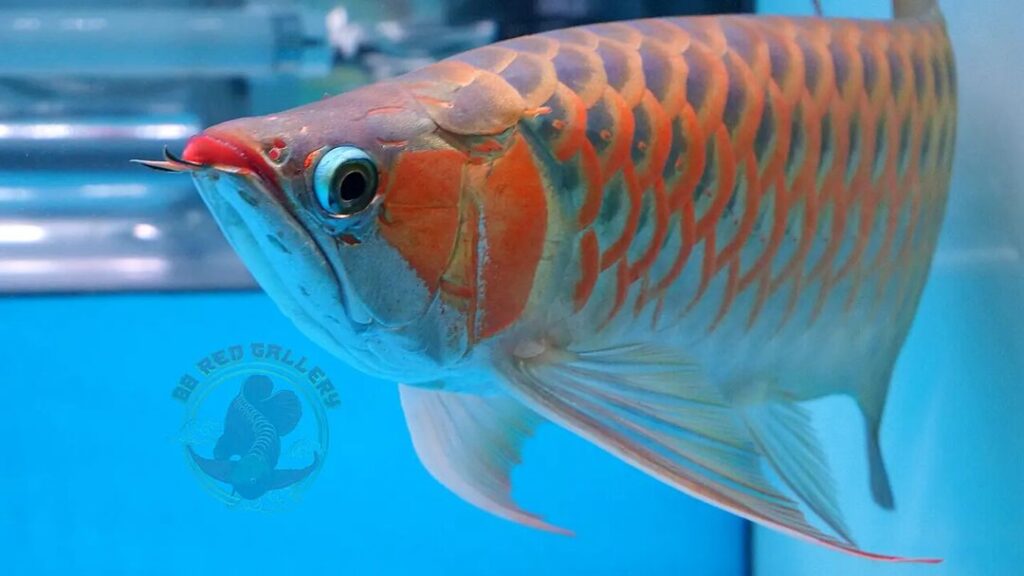
Choosing Tank Mates for Arowana Fish
Arowanas are considered to be violent and territorial, except for the silver and black varieties. The presence of other Arowanas near them, even if they are of a different species, is typically intolerable because Arowanas are known to attack their kind as well. As a result, especially for novices, we do not advise keeping more than one arowana in the same tank.
They can, however, be kept alongside other kinds of fish, however, these fish should, in general, be large enough to avoid being eaten and submissive enough to avoid intimidating the Arowana. Big catfish, stingrays, peacock bass, and other docile giant fish are preferred choices.
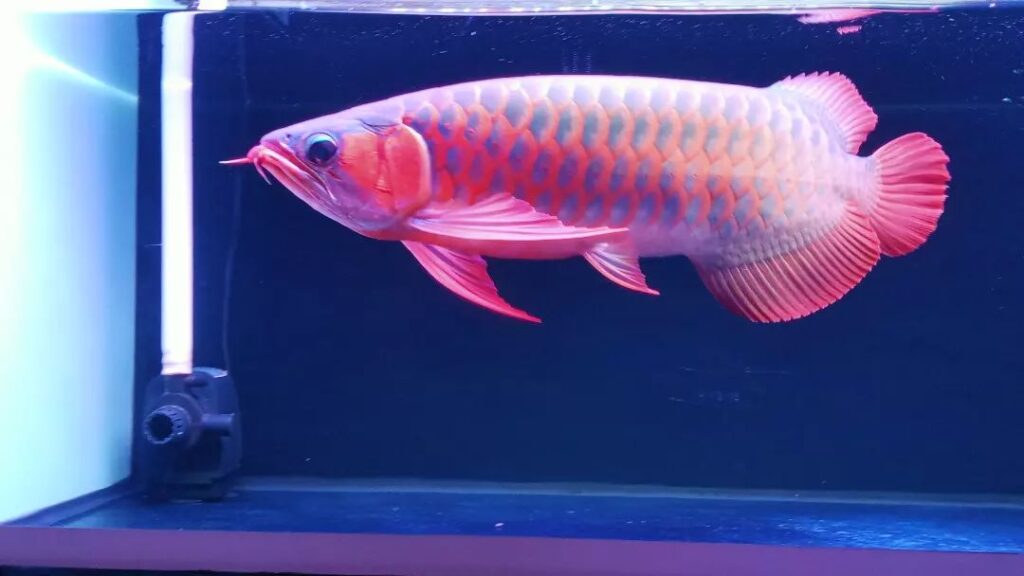
Habitat
The spotted Arowana Fish whose scientific name is Scleropages Leichardti is generally seen in the southern regions of Australia. Their size is almost 90 cm (36 in.). It is difficult to accommodate them in a simple aquarium. They do not have as much a demand as the Asian Arowana. Their other names are: Dawson River, Southern Saratoga, Saratoga, Australian Spotted Arowana, Spotted Barramundi and Leichardti Saratoga.
When compared to the other Arowana varieties of fish, these fish love to remain nearer to the bottom of the substrate, meaning that you could consider keeping them with the Silver Arowana at times. Regarding their diet, they eat anything that enters their mouth, such as Hikari pellets, crickets, insects, and the like. This variety of Arowana fish, are adjustable to temperatures of 75 to 86 of (24 to 30oC), and a pH ranging from 6.5 to 7.5. It is likely that they belong to an aggressive and territorial group.
Description
The normal, healthy growth size of the Arowana Fish is 24 to 30 in. (60 to 75 cm.). The sizes of some, in the wild, reach up to 48 in. (120 cm). Such fish are not suitable as community fish, they are aggressive (by all means), and keeping the Arowana fish in an isolated aquarium is ideal. Bear in mind, that keeping small fishes along with it possibly providing it its diet.
Growing at Home
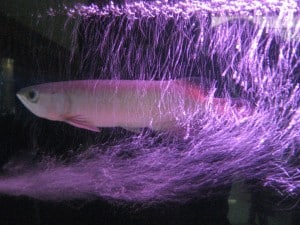
Food
Even though these Arowana fish consume all types of food, they belong to the carnivores group. Feed the juvenile Arowana fish with live or frozen brine shrimp, black worms and also tiny fish. When they grow older, give them bigger fish. The feeding schedule is: Baby Arowana, thrice daily, average sized ones, twice daily and matured ones once daily or on alternate days. Similar to the other fish, the Arowana Fish also prefer a balanced diet.
Tank
The Arowana Fish is not meant for learner aquarium keepers. The Arowana require bigger size aquariums as they grow big. You would do well to have a tank of minimum size 100 gallons. For a juvenile, a small size aquarium is sufficient, but they grow very fast, beyond your imagination. Those who are keen owners of Arowana prefer aquariums of 125 gallons or bigger aquarium.
Water
The Arowana Fish grows well where the temperature is within 75 to 86o F (24 to 30o C), and the pH is within 6 to 7. Keep the juvenile Arowana in a tank of size not less than 36 in. (90cm.). In the process of growing, shift them to a tank of size 48in. (120 cm.). When it attains a size of 15 in. (40 cm.), shift them to a bigger tank. There are chances that the Arowana turns violent and eat the smaller fish in the aquarium. Keeping them along with bigger catfish and some other types is fine. By all means they are pred
Endangerment & Conservation
Arowanas are categorized by the International Union for Conservation of Nature (IUCN) as “Critically Endangered.” According to this categorization, these aquatic creatures have a very high chance of going extinct in the wild.
There are several causes for the sharp drop in arowana populations. One of the main risks to these fish is deforestation since it eliminates their habitats. For these creatures, pollution and overfishing are also significant concerns. Arowana fish are prized as a delicacy in many regions of Southeast Asia. As a result, they are frequently captured and sold for food, endangering natural populations even more.
Arowana fish imports were forbidden by the US Fish and Wildlife Service in 1975 due to their endangered condition and the possibility of illegal transportation. Following the Endangered Species Act, it is currently forbidden to import, export, or transfer Asian Arowana fish into the USA.
Final Thoughts
In conclusion, the Arowana fish is not just a stunning addition to your aquarium but also invites good fortune, wealth, and success into your life. As this remarkable fish glides through the water of your tank, it not only enhances the visual appeal of your living space but also serves as a constant reminder of the positive energies and opportunities it brings.
So why should you miss the chance to own an Arowana fish? Who knows, maybe this has magical powers and can completely change your life for the better!
ators that consume small fishes. For a home aquarium, a juvenile is fine, but they grow very fast when the ideal place is in a big aquarium kept in a public place.

Nato is a content writer and researcher with a background in psychology who’s eager to explore the wonders of nature. As a travel enthusiast and animal lover, she hopes to inspire others to discover and cherish the beauty and importance of the natural world.


